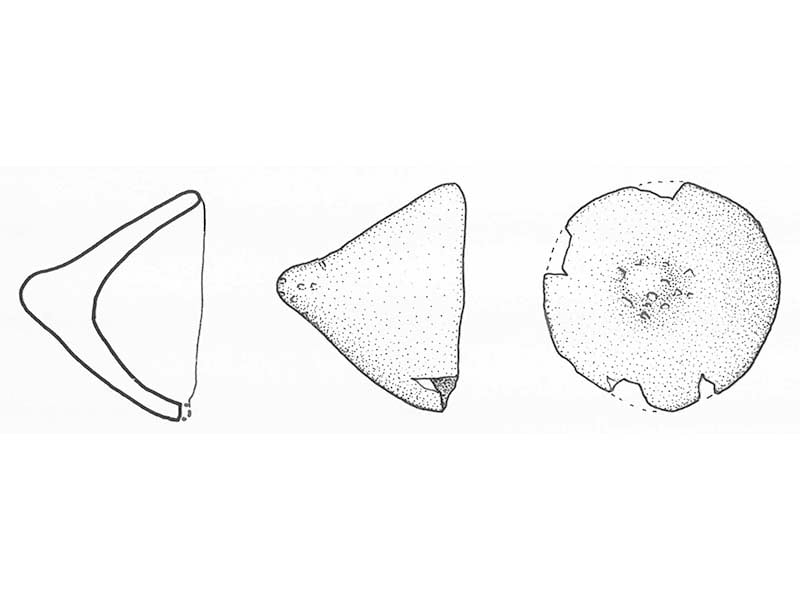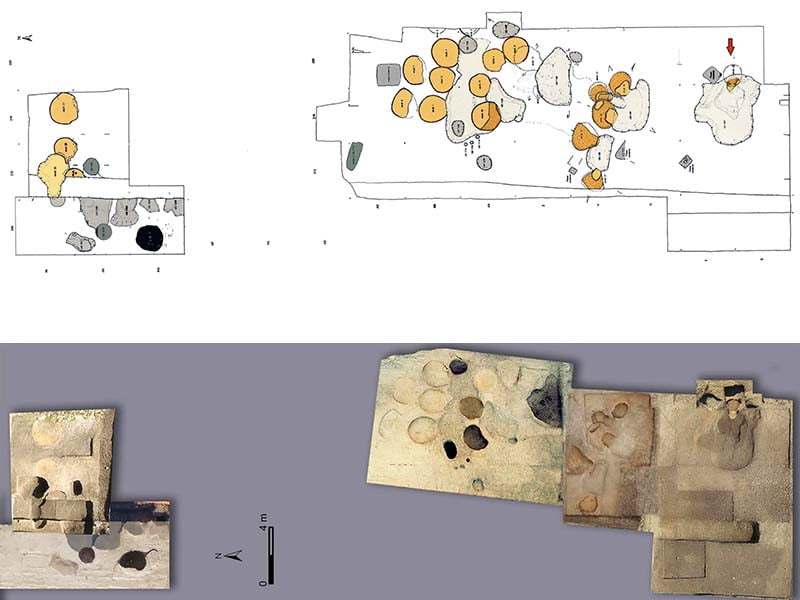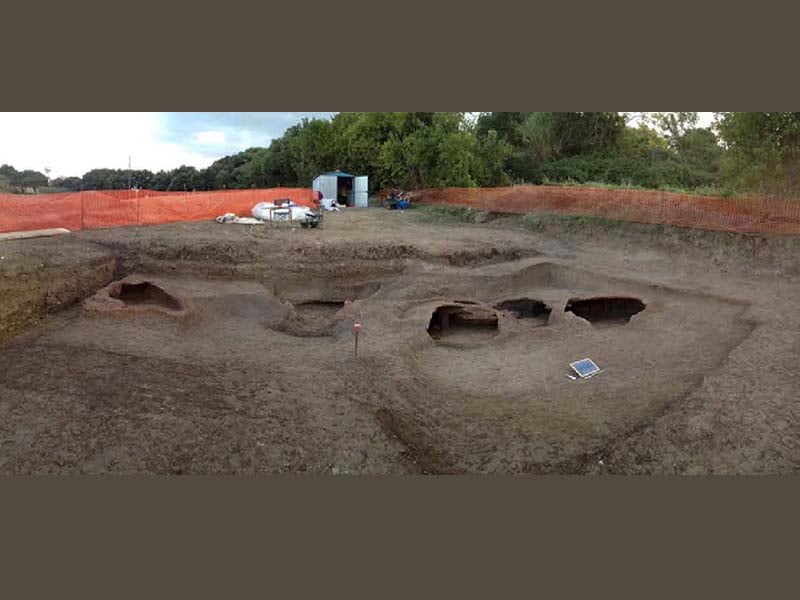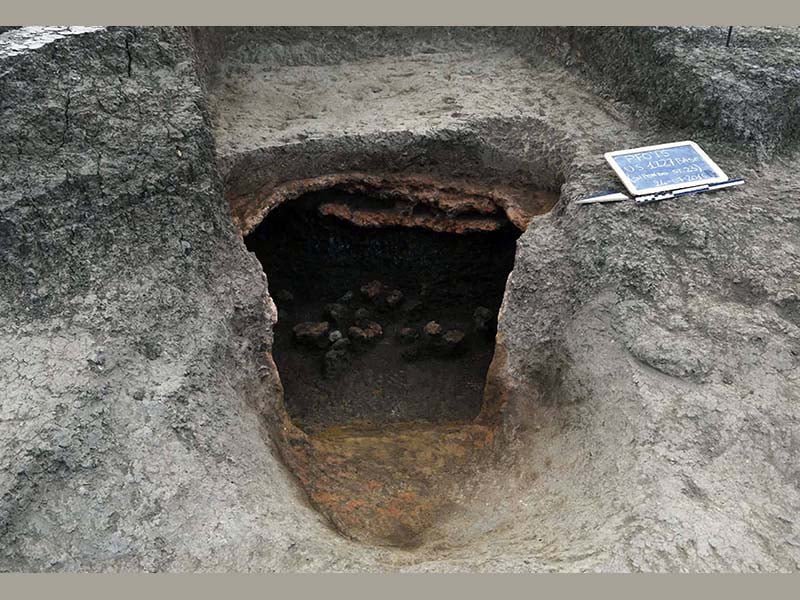The find appears as a cone-shaped clay object, hollow inside, on the end of which there is a prominence characterized by tiny non-passing holes; the surfaces, both internal and external, are smooth and the edges are rounded. The shape clearly resembles a female breast, it is difficult to say whether this object had a practical or purely symbolic function; the hypothesis that it was a small container seems unlikely, as does the hypothesis that it was a lid, given the poor functionality of the grip end. The chemical analyzes carried out on the find did not reveal the presence of organic traces inside it, although it must be underlined that the surface was significantly altered by the calcareous matrix of the deposit in which it was found.
To date, no similar objects have been documented in Italy; In some Neolithic sites in Switzerland and Germany, similar finds have been found, some with painted motifs, but larger in size and not internally hollow.
In our case, the context of discovery of the clay breast opens up an interesting interpretative scenario: the find was in fact found on the bottom level of an oven, part of an area of approximately 600 m23 where a total of 1,80 ovens were discovered. The structures were built by digging hemispherical pits, with an average diameter of approximately XNUMX m, which were subsequently consolidated with fire to make them resistant; seven ovens were found intact, while the remaining were damaged both by natural erosion and by human activities. Archaeological material has very rarely been found inside the ovens, which instead has been found widely in the large pits in front of the ovens (lithic, bone and faunal remains of various kinds). In some cases, charred barley kernels were found inside the ovens, which suggests that they were roasted or dried there in order to then consume them or prepare them for subsequent storage. It is very likely that the kilns were also used for other uses such as the treatment and cooking of food, as well as the drying of ceramics and the heat treatment of flint.
Three burials of adult individuals were found inside two ovens, two of which were male; another burial, of a woman, was found in a central area of the site. The change of intended use is a frequent practice within Neolithic cultures and, as in this case, probably expressed the labile boundary that must have existed between the earthly and otherworldly spheres and the desire to establish their importance and intimate connection . As with burials, the presence of clay breasts inside an oven certainly responded to a precise symbolism: the breast embodies the idea of a source of nourishment and its association with a transformative place such as the oven, where they were prepared and treated elements fundamental for the survival of man (cereals, food, ceramics, flint), perhaps he wanted to underline their intrinsic similarity and symbolic union as sources of life. A conceptual parallel can also be made with the custom, found in many of the European Neolithic settlements, of placing female figurines near the ovens and places where grain was prepared, to underline the bond that must have existed, in the eyes of the agricultural communities , between wheat and the female being, expressions of the cyclical nature of nature, as well as between the oven and the female being, in turn symbols of the transformative and regenerative power of nature.
From the excavations carried out to date, the presence of a settlement in the immediate vicinity of the Fosso Fontanaccia site does not emerge but the numerous findings of various materials on the surface throughout the entire area suggest an intense presence by one or more communities who they lived in the neighborhood.




Historical notes
The site, identified in the 80s, had been the subject of excavation tests by the Superintendence for Archaeological Heritage of the Marche in 1999 and 2006. In 2011 the excavations were resumed by the Department of Ancient Sciences of Sapienza University of Rome2, under the MIBAC concession regime, and were conducted extensively until 2015.
CARD
LATEST PUBLISHED TEXTS
VISIT THE FACTSHEETS BY OBJECT

